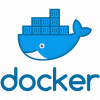Related Content
 |
The Metrics behind High-Performing DevOps Organizations The 2019 Accelerate State of DevOps report was recently released, and it gives a lot of insight into companies' software delivery and operational performance. The highest-performing organizations have several factors in common, the most crucial and prevalent being automation. Here's why automation is such a key aspect. |
|
 |
A DevOps Approach to Mobile App Development DevOps has completely transformed the mobile app development scenario, and it’s a good choice for any business looking to create an app. Let's look at what DevOps means in the context of developing a mobile app, some of the key benefits of a DevOps approach, and five crucial factors to keep in mind during development. |
|
 |
Using a Multibranch Jenkins Pipeline with Docker Typically, code for a Docker image is developed using multiple GitHub branches, with each branch being the code for a single Docker image tag. However, having to create and run a Jenkins pipeline for each GitHub branch can be cumbersome. Try a multibranch pipeline to integrate multiple GitHub branches simultaneously. |
|
 |
The Advantages of Serverless Cloud Providers Most cloud providers have server-based computing services. But that requires servers to be provisioned and administered, and servers have a fixed capacity to operate within. A new DevOps trend is to go serverless—however, this doesn’t mean no servers are used at all. Learn more about this model and its advantages now. |
|
 |
DevOps Isn’t Just about Releasing Faster When organizations start moving to DevOps, one of the first things they focus on is automation. It makes sense: Automated deployment tools are easy to explain, and implementing them usually shows value right away. But speed isn’t the only (or even the best) reason to move to DevOps and an automated release pipeline. |
|
 |
4 Reasons to Use Cloud Testing for Digital Transformation Cloud computing makes data access more reliable and efficient, with less administration effort required, so testing in the cloud can accelerate your digital transformation. This helps guarantee quality and decrease time to market. Here are four more reasons to consider cloud testing for your digital transformation. |
|
 |
Making Continuous Integration Work for You Many developers learn about using continuous integration to improve their deliverability speed and decrease the amount of effort needed to launch new features. Actually practicing continuous integration, however, is nowhere near as straightforward as it sounds. Here's how to get started in making CI work for you. |
|
 |
How Testers Can Use Docker to Shift Left and Automate Deployments Docker has several advantages over virtual machines: It’s easier to deal with, starts up faster, and requires fewer resources. Using Docker also can give testers more confidence in their releases. Developers use the same environment that will be used in production, which streamlines code delivery and shifts QA left. |







